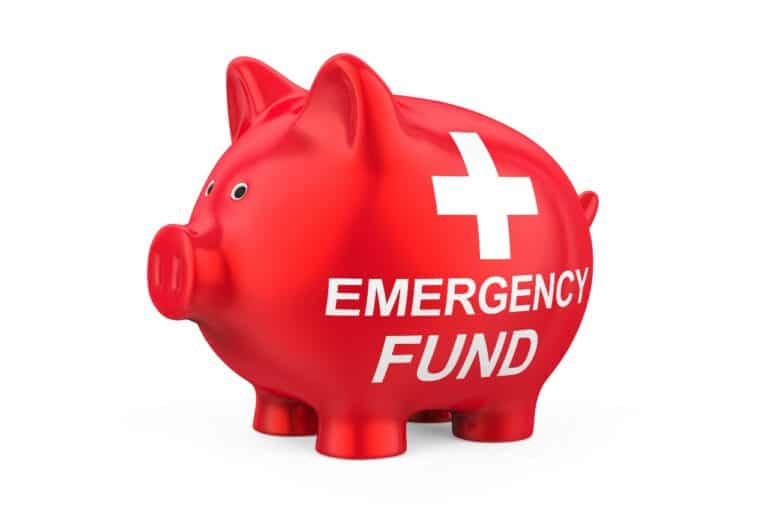The safest places to keep your emergency fund
 The Safest Places to Keep Your Emergency Fund
The Safest Places to Keep Your Emergency Fund
Maintaining readily accessible funds for unforeseen circumstances is crucial for financial stability. A readily available emergency fund mitigates the risk of debt accumulation or disruption to daily life when unexpected expenses arise, such as medical emergencies, job loss, or home repairs. Historically, individuals have relied on various methods to safeguard these funds, ranging from simple savings accounts to more complex investment strategies. The optimal approach depends on individual risk tolerance, financial goals, and access needs.
The importance of a readily accessible emergency fund cannot be overstated. It provides a crucial buffer against financial shocks, preventing potentially devastating consequences. Access to readily available funds reduces stress during difficult times and allows for proactive problem-solving rather than reactive, potentially costly, measures. A well-maintained emergency fund contributes significantly to long-term financial health and security.
This article will explore several options for securing an emergency fund, analyzing their respective benefits and drawbacks to guide informed decision-making.

FAQs about Securing Emergency Funds
This section addresses frequently asked questions regarding the optimal storage locations for emergency funds.
Question 1: What are the best low-risk options for storing emergency funds?
High-yield savings accounts, money market accounts, and certificates of deposit (CDs) generally offer a balance of accessibility and security. These options typically provide FDIC insurance (in the US) up to a certain limit, protecting funds from bank failure. While returns may be modest, the priority is preservation of capital.
Question 2: Are investment accounts suitable for emergency funds?
Investment accounts like brokerage accounts or retirement accounts are generally not ideal for emergency funds. The inherent volatility of the market creates uncertainty around the availability of funds when urgently needed. Liquidation may also incur fees or taxes, further diminishing the available amount.
Question 3: How much money should be kept in an emergency fund?
A commonly cited guideline is three to six months' worth of essential living expenses. This amount provides a safety net sufficient to cover most unforeseen circumstances. However, individual needs may vary depending on factors such as employment stability and existing debt levels.
Question 4: What is the role of FDIC insurance in protecting emergency funds?
The Federal Deposit Insurance Corporation (FDIC) in the United States insures deposits in member banks up to $250,000 per depositor, per insured bank, for each account ownership category. This protection reduces the risk of losing funds due to bank failure.
Question 5: What are the trade-offs between accessibility and potential return?
Higher potential returns often come with lower accessibility and increased risk. Investment accounts may offer higher returns but lack the immediate liquidity of savings accounts. The selection should prioritize accessibility for emergency purposes, even if it means foregoing higher returns.
Question 6: Should I keep my emergency fund in multiple accounts?
Diversifying across multiple accounts, perhaps exceeding the FDIC insurance limit, can provide an additional layer of security, though it may require more diligent management. The approach depends on individual risk tolerance and the size of the fund.
Understanding these nuances helps in making informed decisions regarding the safest and most appropriate location for an emergency fund.
Tips for Securing Emergency Funds
These tips offer practical guidance for establishing and maintaining an effective emergency fund.
Tip 1: Automate Savings: Regular automated transfers from a checking account to a dedicated savings account ensure consistent contributions without requiring conscious effort.
Tip 2: Prioritize High-Yield Accounts: Maximize returns while maintaining accessibility by researching and selecting high-yield savings accounts or money market accounts.
Tip 3: Track Progress Regularly: Monitor account balances to ensure the fund remains adequately funded and aligns with financial goals.
Tip 4: Review Insurance Coverage: Understand the extent of FDIC insurance or equivalent coverage to gauge the level of protection provided.
Tip 5: Consider a Separate Account: Designating a distinct account solely for emergency funds enhances clarity and prevents accidental depletion.
Tip 6: Regularly Assess Needs: Periodically review the adequacy of the fund based on changes in income, expenses, or personal circumstances.
Tip 7: Avoid Temptations: Resist the urge to tap into the emergency fund for non-emergency expenses, preserving its intended purpose.
Implementing these strategies significantly enhances the effectiveness and longevity of an emergency fund.
Conclusion on Securing Emergency Funds
This exploration of various options for securing emergency funds highlights the importance of prioritizing accessibility and security. The optimal approach involves a careful consideration of individual financial circumstances, risk tolerance, and access needs. High-yield savings accounts and money market accounts typically offer an attractive balance of safety and liquidity. Diversification across accounts and regular monitoring further contribute to the effectiveness and longevity of the emergency fund.
Establishing and maintaining an adequate emergency fund is a foundational element of sound financial planning. It provides a crucial safety net, mitigating risks and fostering peace of mind, allowing individuals to confidently navigate unforeseen financial challenges and maintain financial stability.

Published on: 2025-05-03T08:40:20.000Z
